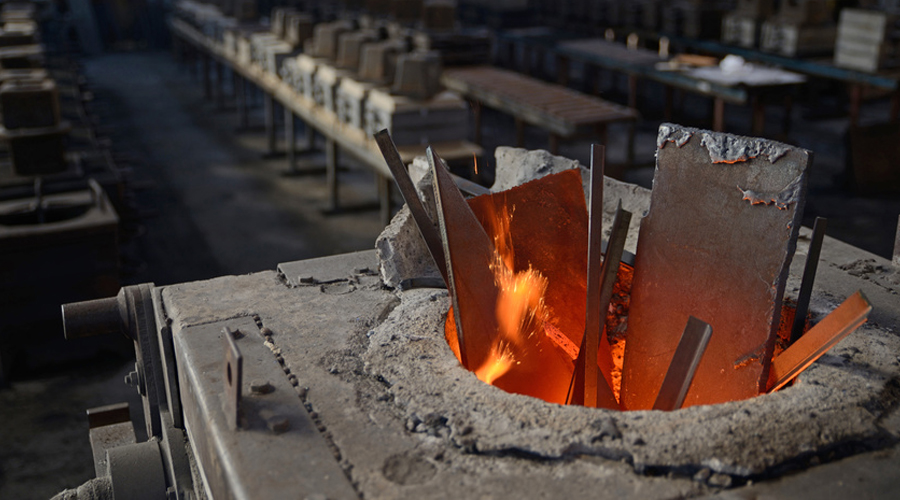Iron induction furnace uses electromagnetic induction to heat and melt iron. It is widely used in foundries and metalworking industries for the production of cast iron and steel. Induction furnaces offer several advantages over traditional furnaces, including higher efficiency, faster melting times and better temperature control.
Iron Induction Furnace
The principle of ironmaking induction furnace is electromagnetic induction. When alternating current (AC) is passed through a coil of copper wire, a magnetic field is created. When a metallic object, such as iron, is placed in this magnetic field, the magnetic field induces a current in the metal, causing it to heat up. This process is called induction heating.
In an iron induction furnace, the metal object to be melted is placed in a crucible or vessel made of refractory material. A coil is then placed around the crucible and an alternating current is passed through the coil. The magnetic field created by the coil induces an electrical current within the metal, causing it to heat up and melt rapidly.
Advantages of Iron Induction Furnace:
Higher Efficiency:
Compared with other types of furnaces, ironmaking induction furnaces have higher energy efficiency. The heating process is localized and efficient, thereby minimizing heat loss. This efficiency means lower energy consumption and operating costs.
Faster Melting Time:
Compared with traditional furnaces, induction furnaces can melt iron and other metals at a faster rate. Rapid heating and melting process can increase productivity and shorten production cycle.
Better Temperature Control:
Induction heating provides precise temperature control, ensuring that the metal is heated to the desired temperature range. This control is critical to achieving the desired performance and quality of the final product.
Cleaner & Greener:
Induction furnaces produce fewer harmful emissions than other types of furnaces. Since the heating process is localized, there is little contact between the metal and the furnace lining, reducing the generation of contaminants. In addition, induction heating does not require the use of fossil fuels, reducing carbon emissions.
Application of Induction Furnace:
Induction furnaces are used in a wide variety of industries, including:
Foundry: Iron induction furnaces are commonly used in foundries to melt and cast steel. They provide precise temperature control, enabling foundries to produce castings of consistent quality and performance.
Automobile industry: The automobile industry widely uses ironmaking induction furnaces to produce auto parts such as engine blocks, cylinder heads and crankshafts. The high efficiency and faster melting times of induction furnaces make them ideal for large-scale production.
Aerospace industry: In the aerospace industry, iron induction furnaces are used for melting and casting various components, including turbine blades, engine casings and structural parts. Precise temperature control and a clean heating process ensure the production of high-quality components.
Metal processing & manufacturing: Iron induction furnaces are also used in various processes in the metal processing and manufacturing industry, such as heat treatment, annealing and forging. The ability to heat up quickly and control temperature makes induction furnaces suitable for these applications.
Iron induction furnace revolutionized the metalworking industry with their efficiency, speed, and precise temperature control. Their ability to melt iron and other metals quickly while maintaining high energy efficiency makes them the first choice for foundries and the metalworking industry.
Furthermore, their eco-friendly features, reduced emissions and minimal heat loss further add to their appeal. With continuous technological advancements, iron induction furnaces are expected to continue to play a vital role in steel production, contributing to the growth and development of various industries.

